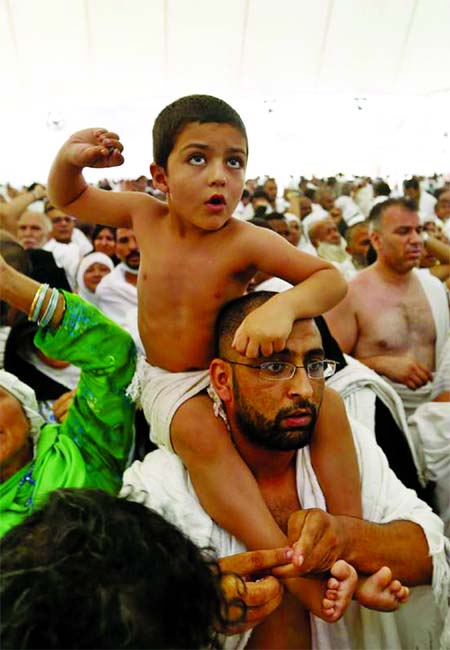
News desk :
Two million Muslims ritually stoned at pillars, symbolizing the Satan (devil) Saturday in the last major rite of this year’s Hajj in Saudi Arabia.
The stoning took place in the Mina valley, about five kilometres (three miles) east of the Grand Mosque in the holy city of Mecca.
All roads leading to the town, which only comes to life during the days of Hajj, were blocked as the crowds dressed in white flowed into the area to toss pebbles at one of three walls representing Satan.
Security officers formed a human chain around the wall as pilgrims tried to push forward.
For Mohsen al-Omar, sweat running down his face, hardship from the heat and the crowds only added to “the joy of carrying out the rites”.
Omar, from Al-Qassim in Saudi Arabia’s north, joined the stoning ceremony with his wife Samira Ajluni.
The pilgrims will stone two other sites on Sunday and Monday as the hajj concludes.
They collected the stones at Muzdalifah on the way to Mina, for the ritual which emulates Hazrat Ibrahim who is said to have stoned the devil at three locations when he tried to dissuade Hazrart Ibrahim from God’s order to sacrifice his son.
Pilgrims had moved to Mina overnight Friday on foot, motorbikes, and buses from Mount Arafat after the hajj reached its zenith with a day of prayer.
This year’s hajj attracted just over two million believers including almost 1.4 million from abroad, according to statistics published by the official Saudi Press Agency. The balance of almost 700,000 came from within the kingdom. These numbers are roughly the same as last year.
The hajj has drawn a cross-section of humanity, everyone from presidents – Sudanese leader Omar al-Bashir was among them – to commoners including a wounded Syrian rebel war veteran, as well as rich and poor pilgrims alike.
The hajj, which officially ends on Tuesday, is the world’s largest Muslim gathering.
It is one of the five pillars of Islam that every capable Muslim must perform at least once, the high-point of his or her spiritual life.

